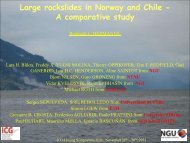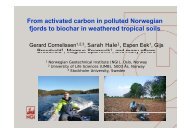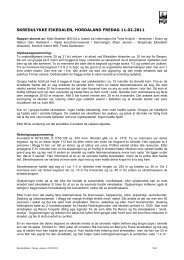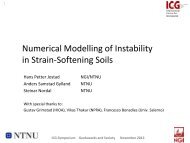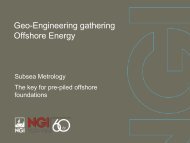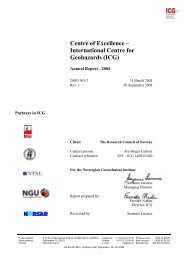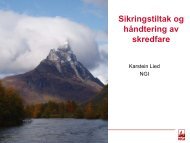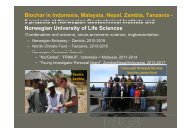fulltext - DiVA
fulltext - DiVA
fulltext - DiVA
You also want an ePaper? Increase the reach of your titles
YUMPU automatically turns print PDFs into web optimized ePapers that Google loves.
Results - Analysisdifferent sources; anthracite based AC from mines and bio mass based AC from coconutshells.The results of the study as presented in detail in the third paper 15 show that capping ispreferable to natural recovery when analysis is limited to effects related to the sitecontamination (primary effects). Incorporation of impacts related to the use of resourcesand energy during the implementation of a thin layer cap (secondary effects) increasesthe environmental footprint by over one order of magnitude, making capping inferior tothe natural recovery alternative, Figure 15. Use of biomass-derived activated carbon,especially when crediting carbon dioxide sequestration during the production process,reduces the overall environmental impact to that of natural recovery.Figure 15 Normalized and weighted environmental footprint for alternativecapping materials used to cap the contaminated inner fjord 155.3 Can LCA be of Value in Sediment management?The results from this study indicates that LCA is a valuable tool for assessing theenvironmental footprint of sediment remediation projects and can be used for problemformulation and prioritization and optimization of remedial alternatives from a life cycleperspective. The use of LCA in contaminated sediment management gives priority toremedial solutions with limited raw material and energy use. LCA may be especiallyrelevant for addressing beneficial sediment and alternative energy uses, such as the useof biomass-derived AC instead of coal based AC as discussed in the paper. LCA cantherefore be the answer to the third research question, which is asking for holistic31




